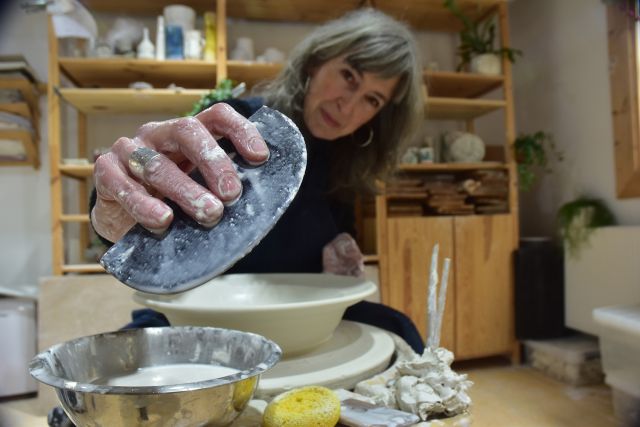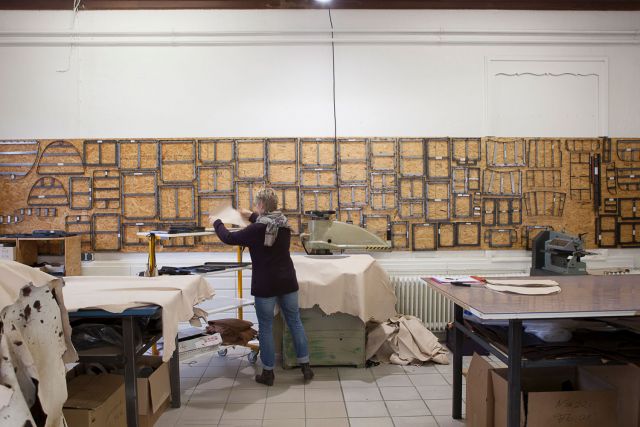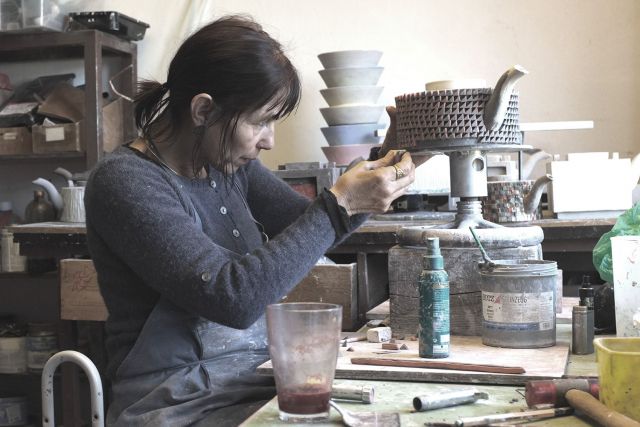While many of the objects Julia creates are designed to convey a sense of motion, flow and harmony, this blue ceramic shell-like form has been deliberately made to express a static state. The hook-like features oblige the piece to stay in one position, while the tilt suggests a tension in which movement is difficult but not impossible.
Diameter 32 cm
Height 25 cm
-sway.jpg.jpeg)
-Portrait2.jpg.jpeg)
-Arbeitsprozess4.jpg.jpeg)
-Arbeitsprozess3.jpg.jpeg)
-CRW_1830.jpg.jpeg)
Julia Saffer
- Ceramicist
- Höhr-Grenzhausen, Germany
- Rising Star
- Recommended by Zentralverband des Deutschen Handwerks
By appointment only
+49 015784994757
Tradition with a twist
- • Julia's works follow the principles of symmetry and repetition
- • She left an engineering career to become a ceramicist
- • She considers tradition to be the gateway to innovation
Julia Saffer had already shelved her childhood dream of becoming a ceramicist and instead decided on a career in electronic engineering as it promised more financial security. But after a few years in the job “the desire for a fulfilled professional life was simply greater than the supposed security of a monthly income,” she says. Consequently, she quit her job and went back to school. She completed her training at the technical school for ceramics in Höhr-Grenzhausen in 2015 and remained in the town, a centre for ceramics, to open her studio and follow that childhood dream. “So far I have not regretted my decision,” Julia says. Her success proves it was the right one.
Read the full interviewWorks
Photo: © Julia Saffer

Photo: © Julia Saffer
When looking at this circular ceramic form, the eye is first drawn to the exterior before being led inwards, giving one a sense of being dragged into the centre of a whirlpool. We cannot see the end of the path nor guess what is on the other side; perhaps it just goes on and on in an infinity loop. Julia’s ceramic work is a symbol of the circles of life and the many repetitions and recurring processes which resemble each other and take place everywhere, every day.
Diameter 35 cm
Height 35 cm
Width 19 cm

Photo: © Julia Saffer
Still, clear and meditative, this ceramic sculpture leads one’s gaze progressively to the centre through different framed segments. Some segments seem to grow, while others appear to shrink. The clockwise circles represent an outward opening, the counterclockwise an interior tension, reflecting the search for inner balance.
42 cm
42 cm
20 cm

Photo: © Julia Saffer
This ceramic piece was inspired by the sea. It is not a reflection of one aspect in particular but of marine micro-organisms in general. The result is an imaginary creature.
25 cm
22 cm
22 cm

Photo: © Julia Saffer
This ceramic piece represents a growing, living structure. It was inspired by thoughts around the will to live as well as power, longing and desire for growth. Parts of the sculpture refer to the human anatomy, some male, some female.
25 cm
22 cm
22 cm













